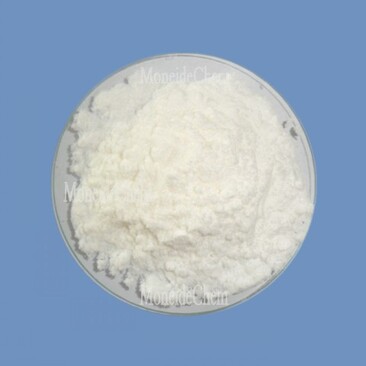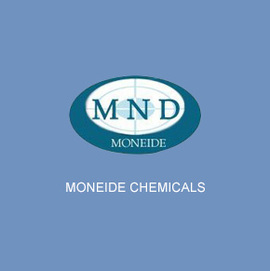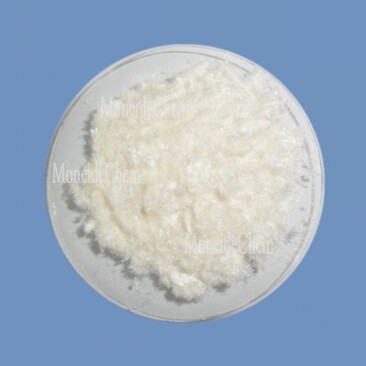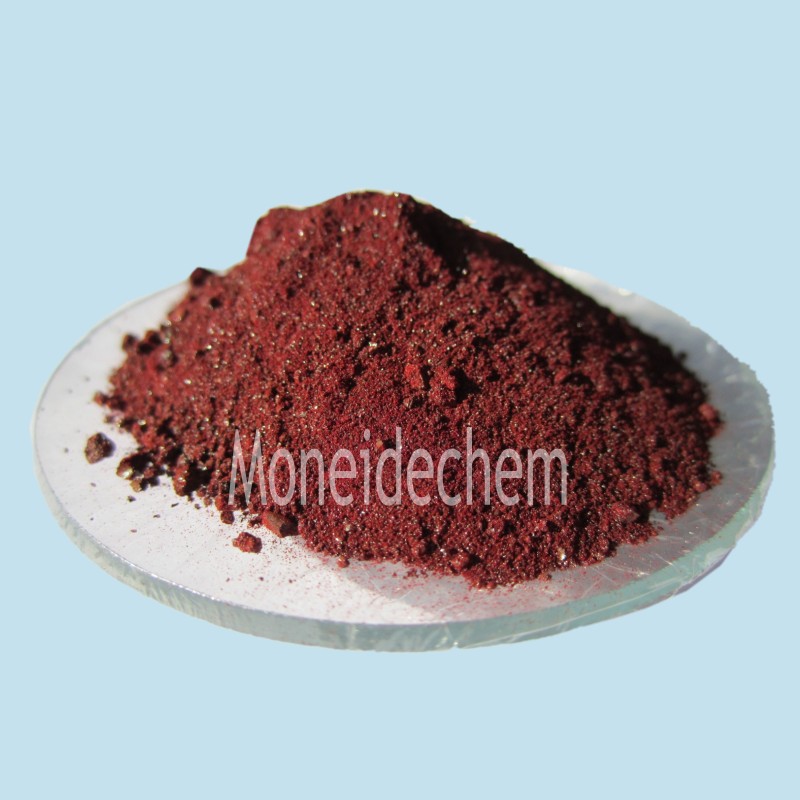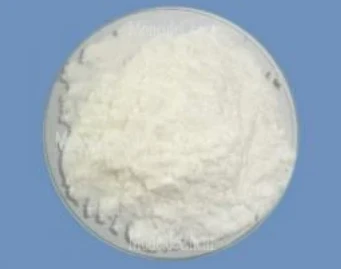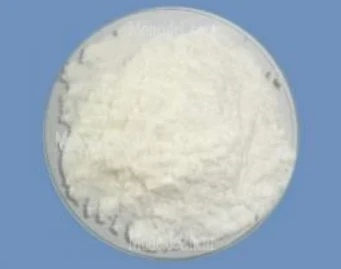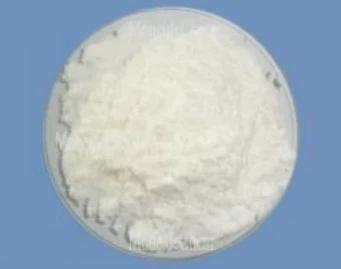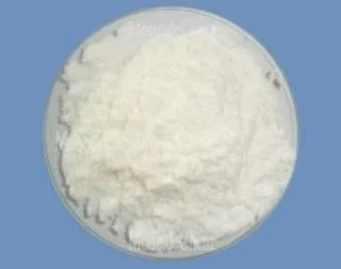Welcome to Tangshan Moneide Trading Co., Ltd.
Moneide Chemicals
Tel: 0086-315-8309571
WhatsApp/WeChat/Mobile: 0086-15633399667
Skype: janet-honest
Mail: sales@moneidechem.com
Address: 2-7-523 Jidong Building Materials Commercial Center, Tangshan, Hebei 064000 China
Premium Sodium Stannate Trihydrate Na2SnO3·3H2O Supplier
- Time of issue:សីហា . 21, 2025 22:00
(Summary description)Tangshan Moneide Trading Co., Ltd. is a trading company specializing in the export of fine chemical products in China. Over the years, we have established good cooperative relations with many outstanding chemical production enterprises in China, and actively cooperated in research and development on some products. Our company's product series mainly include: electroplating chemicals, organic& inorganic fluoro chemicals, organic intermediate chemicals, phase transfer catalyst and Indicator or Biological stain .
- Categories:Company dynamic
- Author:
- Origin:
- Time of issue:2019-12-30 10:55
- Views:
In the realm of advanced material science and industrial chemistry, sodium stannate trihydrate (Na2SnO3·3H2O), also known as sodium stannate or by its CAS number 12027-70-2, stands out as a versatile and critical compound. This inorganic salt of tin, characterized by its white crystalline appearance, plays an indispensable role across a myriad of sectors, from electroplating and surface treatment to specialized glass manufacturing and catalyst production. Its unique chemical properties, including high solubility in water and alkalinity, make it a preferred choice for applications requiring a stable source of tin ions. The growing demand for high-performance coatings, lead-free solutions, and advanced catalysts continues to drive innovation and consumption within the sodium stannate trihydrate market.
The global chemical industry is witnessing a significant shift towards more environmentally sustainable and efficient production methods. In this context, sodium stannate trihydrate offers compelling advantages. Its use in alkaline tin plating, for example, avoids the highly corrosive and toxic solutions often associated with acid-based plating baths, contributing to safer working environments and reduced environmental impact. Furthermore, the exceptional purity levels achievable in modern na2sno3 3h2o formulations are crucial for high-tech applications where even trace impurities can compromise product performance. This introductory segment sets the stage for a deep dive into its manufacturing intricacies, technical specifications, diverse applications, and market dynamics.
The production of high-purity sodium stannate trihydrate is a multi-stage chemical engineering process that demands stringent control over raw materials, reaction conditions, and purification techniques. This section details the typical manufacturing flow, highlighting key stages and quality control measures essential for yielding a product that meets rigorous industrial standards like ISO 9001 and chemical-specific purity specifications.
The primary raw materials are high-grade tin (Sn) and sodium hydroxide (NaOH). Tin can be sourced as ingots, granules, or even from recycled tin streams, provided it meets purity thresholds. Sodium hydroxide, typically in flake or solution form, must also be of industrial or reagent grade. Strict vendor qualification and incoming material inspection are crucial to prevent impurities from entering the process. For instance, the presence of heavy metals in the tin raw material can directly impact the purity of the final na2sno3 3h2o, which is critical for sensitive applications like electronics plating.
The core of the sodium stannate trihydrate synthesis involves the dissolution of tin metal in a hot, concentrated sodium hydroxide solution, typically under controlled atmospheric conditions to prevent undesirable side reactions. This process is an alkaline oxidation reaction where tin reacts with NaOH to form sodium stannate. The reaction vessel is often made of specialized materials, such as nickel alloys or suitably lined steel, to withstand the corrosive nature of the hot alkaline solution.
After the reaction is complete, the crude sodium stannate solution often contains insoluble impurities and unreacted tin. A critical filtration step is performed to remove these solids, typically using plate-and-frame filters or similar industrial filtration equipment. For high-purity grades, additional purification steps, such as activated carbon treatment or ion exchange, might be employed to remove dissolved organic impurities or specific metal ions. This ensures the final 12027-70-2 product meets the stringent purity requirements for electronic and pharmaceutical applications.
The purified solution is then subjected to controlled cooling or evaporation to induce crystallization of sodium stannate trihydrate. This is a highly sensitive stage where crystal size, morphology, and purity are determined. Seed crystals may be introduced to promote uniform growth. Precision in cooling rates and agitation is vital to achieve the desired crystalline structure and minimize impurity occlusion. The trihydrate form, Na2SnO3·3H2O, is stable and widely preferred for its ease of handling and solubility.
The crystallized slurry is separated from the mother liquor using centrifuges. This effectively removes residual solution, minimizing contamination. The wet cake of sodium stannate trihydrate is then dried in a controlled environment, typically using tray dryers, rotary dryers, or fluid bed dryers, to remove surface moisture. Drying temperature and time are carefully monitored to prevent dehydration of the trihydrate form or degradation of the product. The goal is to achieve a consistent, free-flowing powder or crystalline product.
Every batch of sodium stannate trihydrate undergoes rigorous quality control checks. This includes chemical analysis for purity (e.g., Sn content, trace metals), physical properties (e.g., particle size distribution, moisture content, pH of solution), and stability tests. Compliance with standards such as ASTM or specific customer specifications is verified. Products are then packaged in sealed, moisture-proof container111s, often with inert gas purging, to maintain integrity during storage and transit.
This meticulous process ensures that the resulting na2sno3 3h2o is of the highest quality, suitable for demanding applications where consistency and purity are paramount. The commitment to these manufacturing standards directly translates into the superior performance and reliability of the end products utilizing this essential chemical.
Understanding the precise technical parameters of sodium stannate trihydrate is crucial for its effective application in industrial processes. The specifications outlined below represent typical analytical data for high-grade industrial na2sno3 3h2o, ensuring compatibility and optimal performance for various demanding uses.
The purity levels, particularly for trace heavy metals like Lead (Pb) and Iron (Fe), are critical for applications such as electronics, where even minute impurities can compromise conductivity or performance of solder masks and plating baths. High Tin (Sn) content ensures maximum yield and efficiency in processes where sodium stannate is the primary tin source. The consistent pH level indicates its stability in alkaline solutions, a key factor in bath maintenance for electroplating.
These specifications are rigorously tested using advanced analytical techniques such as Inductively Coupled Plasma-Optical Emission Spectrometry (ICP-OES) for elemental analysis, X-ray Diffraction (XRD) for crystal structure verification, and titration methods for primary component content. Adherence to these parameters underscores a product's reliability and suitability for high-stakes industrial applications.
The unique chemical properties and solubility of sodium stannate trihydrate make it an invaluable chemical in a diverse range of industrial sectors. Its primary utility lies in providing a stable and readily available source of tin in an alkaline medium.
This is arguably the largest application area for sodium stannate trihydrate. It serves as the primary source of tin in alkaline tin plating baths. This method is preferred over acid-based baths in many scenarios due to its non-corrosive nature, better throwing power, and ability to plate directly onto steel without a separate strike layer. The resulting tin coatings provide excellent corrosion resistance, solderability, and a bright finish.
In the glass industry, sodium stannate is employed as a opacifier and as a component in certain glazes for ceramics. It enhances the opacity and whiteness of glazes, providing a smooth, durable finish. Furthermore, it's used in the production of specific types of conductive glass coatings, where tin oxide (SnO2) derived from stannates imparts electrical conductivity.
Na2SnO3 3H2O serves as a precursor for various tin-based catalysts. Tin oxides and stannates are known catalysts in organic synthesis, esterification, and the production of polyurethane foams. Their role in promoting specific chemical reactions with high selectivity and yield is increasingly recognized in the chemical industry.
As a source of tin, sodium stannate trihydrate is used in the synthesis of other tin compounds, including organotin compounds, which find applications in plastics (stabilizers), agriculture (fungicides), and glass coatings. It also acts as a mordant in dyeing and printing textiles.
Though less common, tin compounds can be explored in certain niche water treatment applications, particularly in the removal of heavy metals or as a flocculant agent. Research continues into the broader environmental applications of tin chemistry.
The versatility of sodium stannate trihydrate underscores its importance as a foundational chemical. Its adaptability across different industrial processes highlights its economic value and its contribution to modern manufacturing.
Choosing a high-quality supplier of sodium stannate trihydrate provides numerous technical and economic advantages that significantly impact operational efficiency, product quality, and long-term cost savings.
In essence, investing in premium sodium stannate trihydrate is not just a procurement decision; it's a strategic choice that underpins operational excellence, regulatory compliance, and long-term profitability in competitive industrial landscapes.
Selecting the right supplier for sodium stannate trihydrate is a critical decision that extends beyond mere price considerations. A reliable partner offers not only competitive pricing but also consistent quality, robust technical support, and flexible logistics. Here's a comparison matrix highlighting key differentiating factors among manufacturers.
The table above illustrates that while Tier 3 suppliers might offer the lowest per-unit cost, the hidden costs associated with quality control failures, process instability, and lack of support can significantly inflate the Total Cost of Ownership (TCO). For critical applications, a Tier 1 supplier like Moneide Chem, with robust quality assurance, R&D capabilities, and a reliable supply chain for sodium stannate trihydrate, presents a more economically sound and strategically advantageous partnership.
Our 15+ years of experience in the chemical industry, coupled with adherence to international quality standards, positions us as a trusted partner for your na2sno3 3h2o requirements. We hold various certifications, including ISO 9001:2015, ensuring consistent quality management throughout our operations.
Beyond standard product offerings, the complexities of modern industrial applications often necessitate tailored solutions for sodium stannate trihydrate. A proficient supplier collaborates closely with clients to develop specific grades, packaging, or delivery methods that perfectly align with their operational needs.
A leading global manufacturer of electronic connectors required a consistent supply of ultra-high purity sodium stannate trihydrate for their alkaline tin plating lines. Their critical need was for minimal lead and iron content (below 5 ppm for each) to ensure the solderability and long-term reliability of tiny, high-density connectors, crucial for 5G telecommunication infrastructure.
A research institution developing novel catalysts for the transesterification of vegetable oils into biodiesel required sodium stannate with precise reactivity characteristics and low alkaline earth metal content. They needed a precursor that would uniformly incorporate tin into their heterogeneous catalyst matrix.
These cases underscore our capability not just as a supplier but as a strategic partner, offering bespoke sodium stannate trihydrate solutions that address specific industrial challenges and drive innovation for our clients.
Building trust in the B2B chemical supply chain is paramount. Transparency in operations, clear communication regarding logistics, and unwavering customer support are foundational pillars. Here, we address common inquiries and outline our commitment to delivering high-quality sodium stannate trihydrate with exceptional service.
We operate a robust global supply chain network designed to ensure timely and secure delivery of sodium stannate trihydrate. Our logistics team works diligently to manage international shipping, customs clearances, and local distribution, providing end-to-end visibility. We collaborate with reputable freight partners experienced in handling chemical goods, ensuring compliance with all transport regulations (e.g., IMO, ADR). For critical deliveries, we offer inventory management solutions and safety stock arrangements to mitigate supply chain risks for our long-term partners.
Our dedication to customer satisfaction extends beyond product delivery. We view our clients as partners and strive to build long-term relationships based on mutual trust and shared success. Our dedicated account managers provide personalized service, understanding your unique needs and proactively offering solutions. From initial inquiry to post-delivery support, our team is committed to responsiveness and effective communication. This holistic approach ensures that your experience with our na2sno3 3h2o product and services consistently exceeds expectations.
The landscape for industrial chemicals like sodium stannate trihydrate is continuously evolving, driven by advancements in material science, environmental regulations, and shifting industrial demands. Understanding these trends is crucial for strategic planning and innovation.
The push for greener chemical processes is intensifying. For sodium stannate trihydrate, this translates to research into more energy-efficient synthesis routes, reduced waste generation, and potentially using recycled tin sources with advanced purification techniques. The alkaline nature of stannate baths already offers an advantage over highly acidic alternatives in terms of corrosion and safety, but further innovations in waste recycling from plating baths are expected.
Sodium stannate is a precursor to tin oxide (SnO2), a material with broad applications in transparent conductive oxides (TCOs) for displays, gas sensors, and lithium-ion battery electrodes. Research is exploring new methods to synthesize nano-structured tin oxides from na2sno3 3h2o for improved performance in these high-tech fields. For example, using sodium stannate trihydrate in hydrothermal synthesis can yield SnO2 nanoparticles with tailored properties, critical for next-generation energy storage and smart devices.
Beyond traditional uses, new catalytic applications for tin compounds derived from sodium stannate are emerging. This includes their role in biomass conversion, CO2 utilization, and specialized organic reactions. The precise control over tin valence states offered by stannate precursors makes them attractive for developing highly selective and efficient catalysts for complex chemical transformations.
Global regulations (like REACH in Europe, TSCA in the US) continue to evolve, pushing for stricter controls on chemical substances. Manufacturers of sodium stannate trihydrate must stay ahead of these changes, ensuring their products and processes remain compliant. Furthermore, recent global events have highlighted the importance of resilient supply chains, leading to a greater emphasis on diversified sourcing and robust logistics to ensure uninterrupted supply.
These trends indicate a dynamic future for sodium stannate trihydrate, with continued innovation in its synthesis and application. Companies that invest in R&D, maintain high-quality standards, and prioritize sustainable practices will be best positioned to capitalize on these evolving opportunities.
Sodium stannate trihydrate remains a cornerstone chemical across numerous high-tech and traditional industries. Its multifaceted utility, primarily as a robust source of tin for electroplating, a precursor in advanced material synthesis, and a component in specialized chemical applications, underscores its irreplaceable role. As industries continue to demand higher performance, greater efficiency, and enhanced environmental compliance, the importance of sourcing na2sno3 3h2o from manufacturers committed to stringent quality control and innovative practices becomes increasingly critical.
The manufacturing excellence, detailed technical specifications, broad application spectrum, and clear advantages of using premium-grade sodium stannate trihydrate are not merely selling points but fundamental drivers of operational success for B2B clients. Companies that invest in high-quality inputs benefit from reduced operational costs, minimized waste, enhanced product reliability, and a stronger competitive edge in their respective markets. By partnering with a supplier that embodies expertise, experience, authority, and trustworthiness, businesses can ensure a consistent and reliable supply of this vital chemical, supporting their growth and innovation in the years to come.
Understanding Sodium Stannate Trihydrate: A Core Industrial Chemical
The Advanced Manufacturing Process of Sodium Stannate Trihydrate
1. Raw Material Preparation & Sourcing
2. Dissolution and Reaction (Alkaline Oxidation)
3. Filtration and Purification
4. Crystallization
5. Centrifugation and Drying
6. Quality Control & Packaging
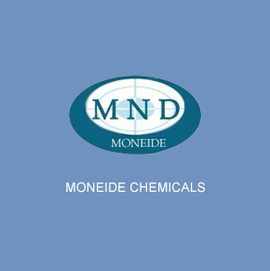 Conceptual Diagram: Simplified Manufacturing Process Flow of Sodium Stannate Trihydrate
Conceptual Diagram: Simplified Manufacturing Process Flow of Sodium Stannate Trihydrate
Key Technical Parameters and Specifications of Sodium Stannate Trihydrate
Versatile Applications of Sodium Stannate Trihydrate Across Industries
1. Electroplating and Surface Treatment
2. Glass and Ceramics Manufacturing
3. Catalyst Production
4. Chemical Synthesis and Specialty Chemicals
5. Water Treatment and Environmental Applications
Technical Advantages and Economic Benefits of Utilizing High-Quality Sodium Stannate Trihydrate
1. Superior Purity and Consistency
2. Optimized Performance in Applications
3. Compliance and Sustainability Benefits
4. Economic Returns
Choosing Your Supplier: A Comparison Matrix for Sodium Stannate Trihydrate Manufacturers
Customized Solutions and Application Cases for Sodium Stannate Trihydrate
Customization Capabilities:
Illustrative Application Cases:
Case Study 1: High-Volume Electronics Connector Plating
Case Study 2: Innovative Catalyst Development for Biofuel Production
Commitment to Trustworthiness: FAQs, Delivery, and Support for Sodium Stannate Trihydrate
Frequently Asked Questions (FAQs)
A: For standard bulk orders, our typical lead time is 2-4 weeks from order confirmation, depending on destination and current stock levels. Expedited options are available for urgent requirements.
A: We offer various packaging options, including 25kg PE-lined woven bags, 500kg/1000kg supersacks (FIBCs), and custom packaging upon request, to suit your handling and storage needs. All packaging is designed to protect the product from moisture and contamination.
A: Our quality assurance system is ISO 9001:2015 certified. Every batch undergoes rigorous testing using advanced analytical techniques (ICP-OES, Titration, XRD) to verify compliance with our stringent specifications and relevant industry standards. A Certificate of Analysis (CoA) accompanies every shipment.
A: Absolutely. Our team of experienced technical specialists and chemical engineers is available to provide guidance on product handling, dissolution, process optimization, and troubleshooting to ensure seamless integration and optimal performance in your applications.
A: We stand by the quality of our products. In the unlikely event of any quality discrepancy from our specifications, we offer a comprehensive resolution process, including product replacement or credit, subject to our standard terms and conditions. Our commitment is to ensure your complete satisfaction.
Delivery and Logistics Assurance
Customer Support and Partnership Approach
Future Outlook and Research Trends for Sodium Stannate Trihydrate
1. Green Chemistry and Sustainable Production
2. Advanced Materials and Nanotechnology
3. Diversification in Catalyst Applications
4. Regulatory Evolution and Supply Chain Resilience
Conclusion: The Enduring Value of High-Quality Sodium Stannate Trihydrate
References









